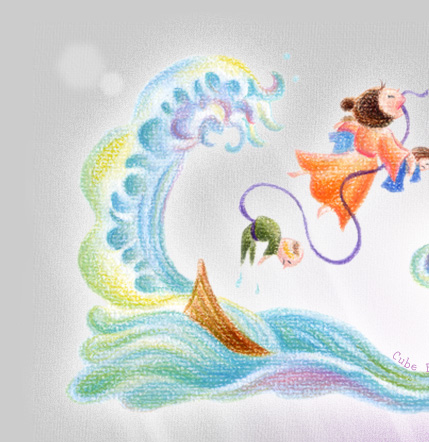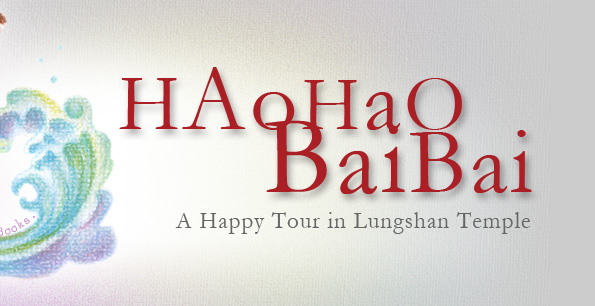














The location of Lungshan was called "Bang-ga," an earliest settlement for Han people in northern Taiwan. Once, in the evening, along a bamboo bush next to where some Han people lived, there was a startling flashing and glimmering. The residents walked close to inspect, and found a sachet of burned incense hanging on a banyan tree among the bamboo, glimmering alone. On the sachet was embroidered "Lungshan Temple Guanyin Bodhisattva."
As a matter of fact, a sailor who was shopping for rattan products had just passed by here to take a piss. He had hung the bag on the tree out of respect before he went to piss, but he forgot to retrieve it and left. In those days, the troubled waters of Taiwan straits that was called the "black gutter," scared even experienced sailors. So sailors always brought an charm which was obtained from their hometown temples with them. The sachet that this sailor brought was from Anhai Lungshan Temple.
Since then, this sachet of burned incense was relied on by Bang-ga residents as their spiritual trust. Many people prayed to the sachet and, one by one, the requests came true. The residents had a discussion, and then crossed the sea to Anhai Lungshan temple that was located in Jinjong Cheng Zhou, very reverently requesting a Guanyin Doppelgänger for Taiwan. The construction of new temple was started in May 18th 1738, and finished in February 8th 1740.
Over more than 200 years, Lungshan temple has endured earthquakes, storms, fires and war, several times collapsing and being rebuilt, which led to some reconstruction, including: one large scale reconstruction and a small scale reconstruction during the Chin dynasty, a large scale reconstruction during the Japanese era, and several reconstructions after Japan quit Taiwan. As the result of these works, Lungshan temple became a religious center for Buddhism, Taoism and Confucianism as well as having a non-replicable religious architecture. The total dimensions are over 5950.422 ㎡, a walled compound with three entrances and houses around it like a traditional Chinese palace construction: front hall, state hall, right and left side halls. The foundation of the state hall is higher, making it the highest building in the temple with its ridge roofs getting lower as they reach outward. The architecture, the carvings, the beauty of the artwork of the temple, gathered over eras from the Chin dynasty, Japanese era and after, also make it a national hertiage that was surprising to our government.


